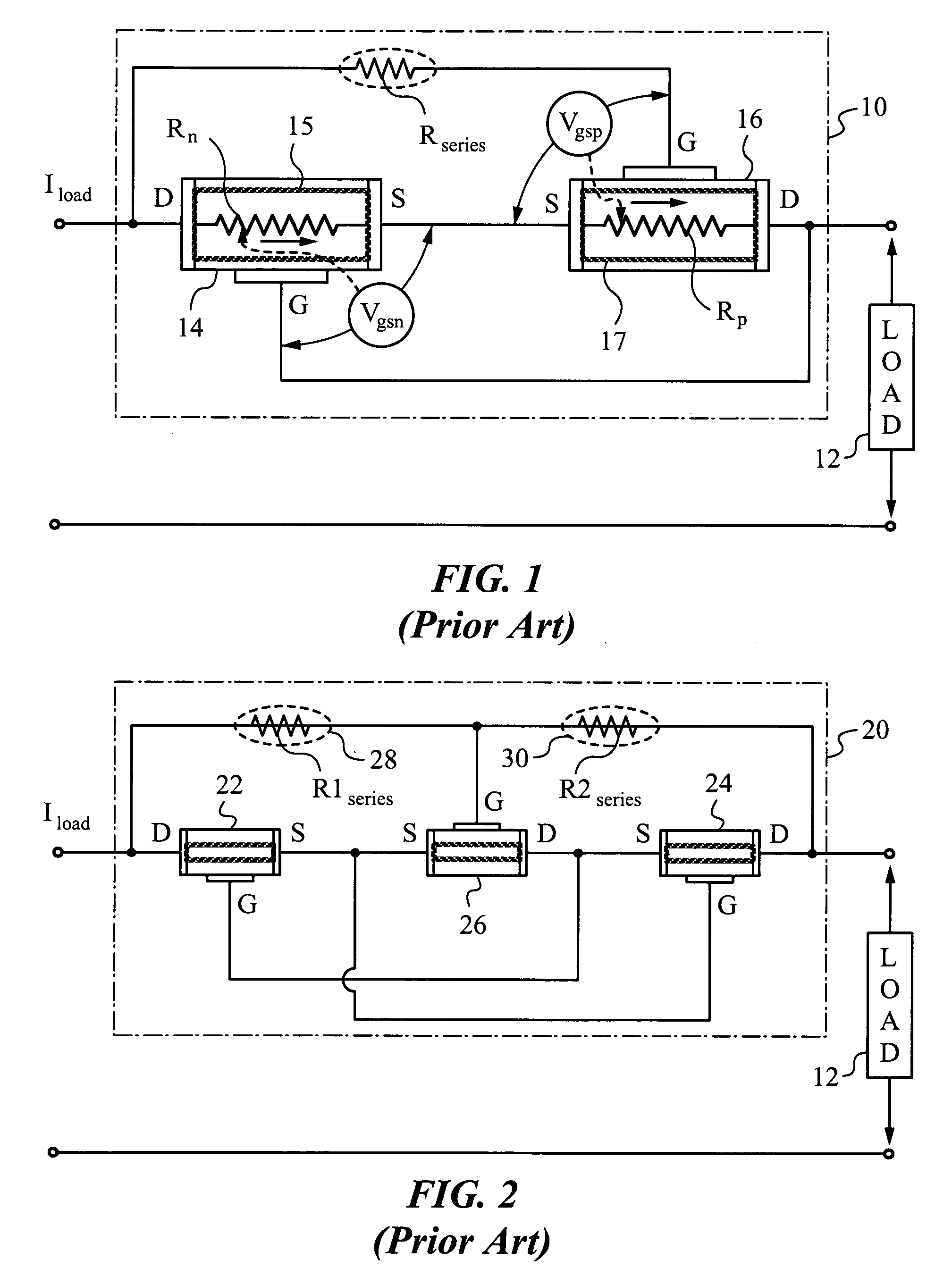Apparatus and method for enhanced transient blocking
a technology of enhanced transient blocking and apparatus, applied in the direction of pulse technique, transistor, electronic switching, etc., can solve the problems of frequent insufficient performance parameters of fuses and protection circuits, limited performance, and permanent damage, so as to reduce the total resistance of an apparatus, reduce power loss, and increase system efficiency
- Summary
- Abstract
- Description
- Claims
- Application Information
AI Technical Summary
Benefits of technology
Problems solved by technology
Method used
Image
Examples
Embodiment Construction
[0027] The present invention and its principles will be best understood by first reviewing prior art uni-directional and bi-directional transient blocking units (TBUs) designed for over-voltage and over-current protection. The diagram in FIG. 1 shows a prior art TBU 10 for protecting a load 12 from voltage and / or current transients of one polarity, i.e., positive voltage spikes or surges. For this reason, TBU 10 is called unidirectional or uni-directional. TBU 10 uses a depletion mode n-channel device 14, typically an n-channel metal-oxide-silicon (NMOS) device implemented as a field effect transistor (FET). TBU 10 also uses a depletion mode p-channel device 16, typically a p-channel junction gate field effect-transistor (PJFET). It should be noted that PMOS, NJFET devices can also be used as devices 14, 16. In the example shown, both NMOS and PJFET 14, 16 are interconnected to take advantage of their n-channel and p-channel biasing and resistance properties to cause mutual switch o...
PUM
 Login to View More
Login to View More Abstract
Description
Claims
Application Information
 Login to View More
Login to View More - R&D
- Intellectual Property
- Life Sciences
- Materials
- Tech Scout
- Unparalleled Data Quality
- Higher Quality Content
- 60% Fewer Hallucinations
Browse by: Latest US Patents, China's latest patents, Technical Efficacy Thesaurus, Application Domain, Technology Topic, Popular Technical Reports.
© 2025 PatSnap. All rights reserved.Legal|Privacy policy|Modern Slavery Act Transparency Statement|Sitemap|About US| Contact US: help@patsnap.com



